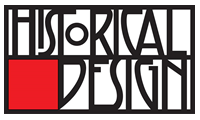Product Description
Koloman Moser (attr.) / Portois & Fix Vienna Secession Center Table c.1902


KOLOMAN MOSER attr. (1868-1918) Austria
PORTOIS & FIX Vienna, Austria
Secessionist center table c. 1902
Exotic wood with brass inlaid squares, brass stretcher and feet with nickel-plated sabots
Marks: No. 29378 (inventory paper label), oval metal plaque in Russian with No. 798
***This table was likely exhibited at the 1902 Moscow Exhibition of Architecture and Applied Art and that is perhaps the reason for the Russian metal plaque.
For more information see: Art in Vienna, Peter Vergo (London: Phaidon Press Ltd., 1975), p. 139, footnote 88, p. 247.
H: 29” x W: 29” x L: 42 1/4”
Price: $42,500
Koloman Moser (attr.) / Portois & Fix Vienna Secession Center Table c.1902
MITSUKOSHI Japan
EARLY SHOWA PERIOD (1926-1989) Japan
Vase c. 1925-30
Silver with repoussé blossoms and leaves on a bulbous form with collar
Marks: Mitsukoshi (Japanese characters)
H: 6” x D: 9 1/2”
SOLD
